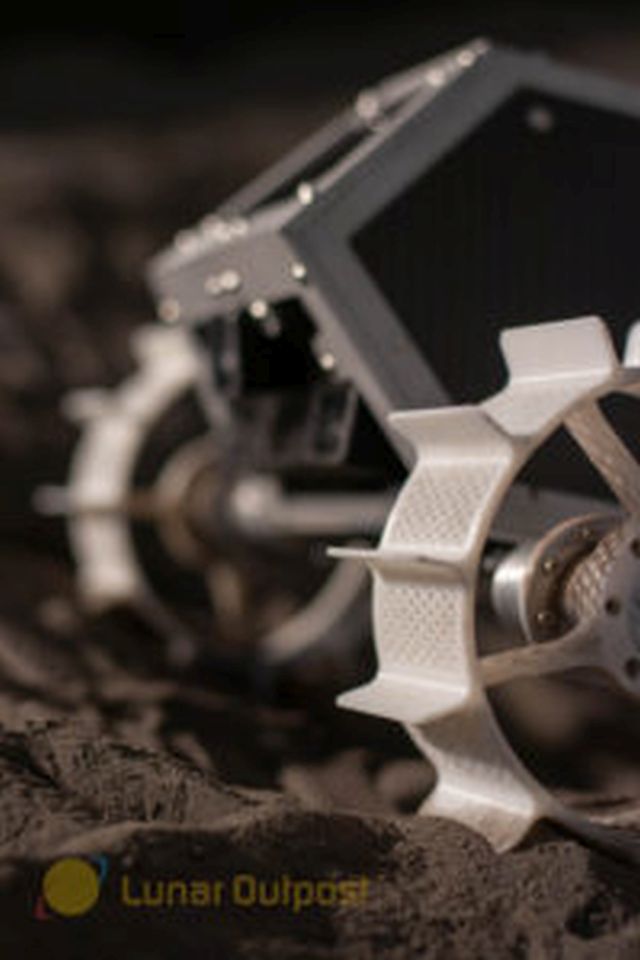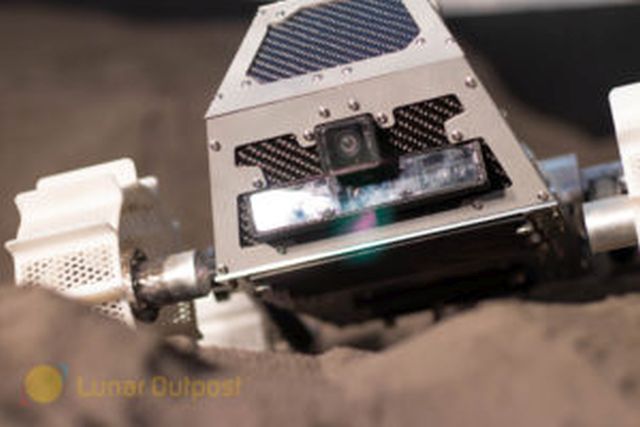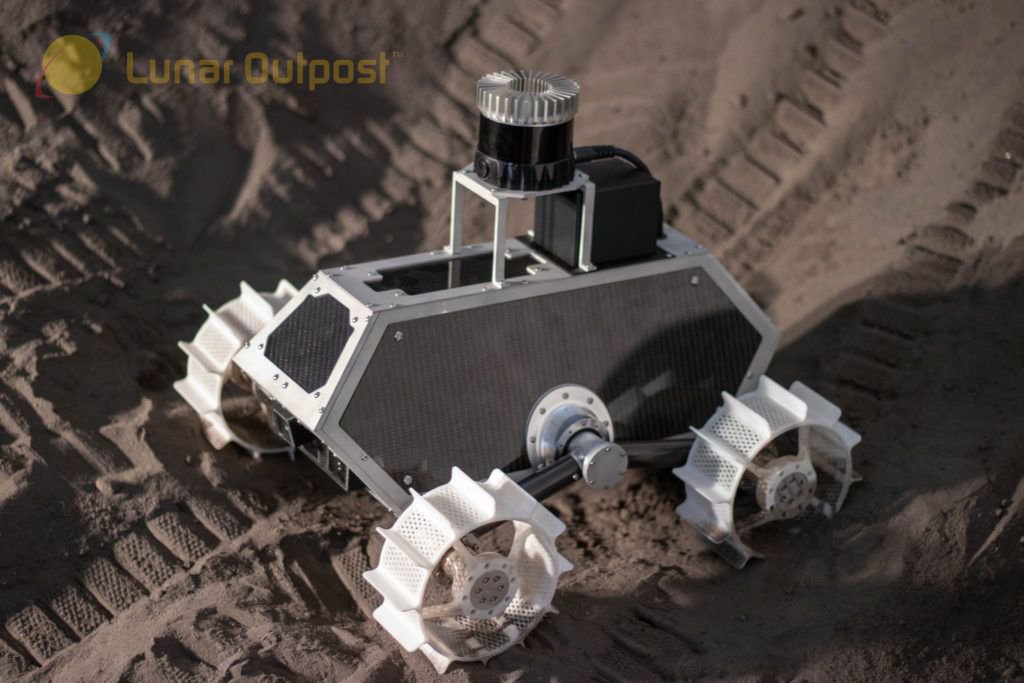Space technology company Lunar Outpost has unveiled their new Lunar Prospector rover that will explore the surface of the Moon to search for and map resources. The Lunar Prospector is designed to drill for and analyze sub-surface samples. The first of the smallish robots was recently demonstrated on simulated Lunar regolith at the Colorado School of Mines.
The Moon contains useful resources, and space technology start-up Lunar Outpost wants to find them. Evidence from remote-sensing suggests that there’s water in the soil, in the thin atmosphere, and there are likely large amounts of water frozen in the permanently shaded sides of craters. And in August 2018, NASA confirmed the presence of water ice at the Moon’s poles.
The Moon may also have other valuable resources, such as Helium 3. Helium 3 is very rare here on Earth and could be a valuable fuel for nuclear fission, once the technology gets worked out. The Moon may contain up to one million tons of it, an enormous amount. The Moon also has iron and nickel, deposited on the surface by asteroid strikes.
But all these resources were identified by remote-sensing. The next step is to map where they are and to constrain some of the estimates of their amounts. That’s called ground-truthing, and that’s where the Lunar Prospector comes in.

The Lunar Prospector is small. It weighs only 10 kg. (22 lbs.) It’s designed to work in teams, covering much more ground than a single larger rover could. They will be deployed to identify landing sites and sites for resource extraction operations in the future.
The focus of the Lunar Prospector is to provide exploration data for In Situ Resource Utilization, or ISRU. ISRU is important because as humans venture further out into the Solar System and try to establish a presence there, we will not be able to bring everything we need with us. We’ll have to find and use resources along the way. And the Moon is a logical first step. Lunar Outpost hopes that their Prospector robots will provide early ISRU data to future missions, enabling better mission planning.
Each of the 10 kg ‘bots has about half that weight available for specialized payloads, with the rest used by on-board navigation equipment. The Lunar Prospectors will employ LIDAR, (Light Detection and Ranging) which is similar to radar, but uses lasers. LIDAR uses pulses of laser light to illuminate a target, and the reflected light is measured with a sensor to give distance to the target. LIDAR does this rapidly, and can quickly create a 3D map of its environment. Together, a group of Lunar Prospectors will make a very efficient mapping team. The Prospectors will use their LIDAR to move around the surface and avoid hazards and obstacles.
LIDAR creates a much higher resolution map of the surface than an orbiter ever could. The Prospectors will create maps with unprecedented centimeter-scale resolution. And because they use LIDAR, they can work in the dark. No lighting needed.

They can also be operated remotely, or tele-operated, by using NASA’s Lunar Orbital Platform-Gateway (LOP-G) concept as a center of operations. The LOP-G is a proposal for a space station in orbit around the Moon that will serve as a communications hub, science laboratory, short-term habitation module, and holding area for rovers and other robots.
The Prospectors are designed to be robust, capable platforms that can be customized and mass-produced to a variety of mission profiles.
The Lunar Prospector system represents a paradigm shift in robotic exploration. Previously, all robotic explorers have been single units with a large team of personnel managing the mission. NASA’s Spirit, Opportunity, and Curiosity rovers are in that mold. But Lunar Outpost wants to flip that on its head, with a large number of Prospectors controlled by a single operator. They call this the Autonomous Lunar Prospecting Swarms (ALPS).
A single operator would oversee a swarm of robots, but wouldn’t need to micro-manage them. Each bot would perform its tasks autonomously using AI and decision-making algorithms. This means the swarm of ‘bots could go about its mission even while the human overseer was resting or sleeping.
Each Lunar Prospector can also drill for sub-surface samples and analyze those sample, giving a much more detailed measurement of resource concentrations than any remote-sensing can. Each one will also have a forward-facing spectrometer to scan the Lunar surface. As resources are detected, the Prospector can follow the spectrometer to greater concentrations of resources. The company likens this to the mining practice of “following the vein” of ore in mining here on Earth. The Prospectors will also be able to capture 4k video of their surroundings, another valuable resource for mission planners.
The Prospectors are designed to be robust, capable platforms that can be customized and mass-produced to a variety of mission profiles. While larger, more sophisticated rovers won’t be going extinct any time soon, they’re not necessary on the Moon, where swarms of Prospectors can be employed.
Lunar Outpost plans to announce their first mission to the Moon sometime in mid-2019.
Sources:
- Lunar Outpost website
- Colorado School of Mines
- Wikipedia page: Lunar Water
- JPL news: Ice Confirmed at the Moon’s Poles
- Wikipedia page: Lidar
- NASA News: NASA’s Lunar Outpost will Extend Human Presence in Deep Space


Wonder what will be the source of power for the ALPS. I went to the Lunar Outpost web page and it fails say. I can’t imagine that solar could be an option, with very little surface area to collect and the dust contamination is a huge issue. I don’t know about the use of radioactive/heat derived power. And how does anyone justify sending hundreds of ALPS to die on the moon with radio active waste on board?